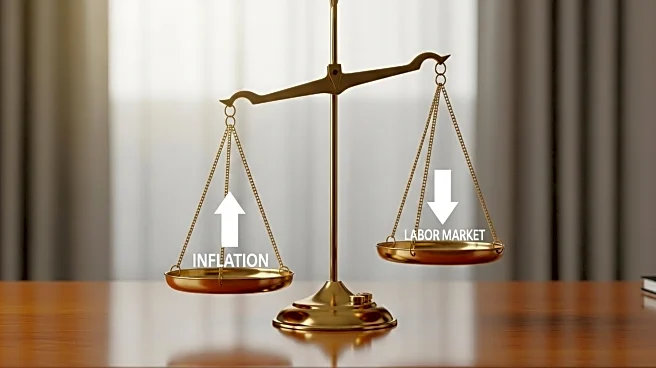What's Happening?
The Federal Reserve is anticipated to cut interest rates by 50 basis points in September following a disappointing U.S. jobs report. The nonfarm payrolls report revealed a significant drop in job growth for August, with the unemployment rate rising to 4.3%, the highest in nearly four years. This data has led to increased expectations for a rate cut, with Fed funds futures indicating a 90% chance of a 25 basis-point reduction and a 10% chance of a 50 basis-point cut. Major financial institutions like Standard Chartered and Bank of America have adjusted their forecasts, with Standard Chartered predicting a 50-basis-point cut and Bank of America expecting two 25-basis-point reductions in September and December.
Why It's Important?
The potential rate cut by the Federal Reserve is significant as it could influence various sectors of the U.S. economy. Lower interest rates typically encourage borrowing and investment, potentially stimulating economic growth. However, they can also lead to lower returns on savings and impact the profitability of financial institutions. The decision comes at a time when the U.S. economy is showing signs of slowing down, as evidenced by the weak jobs report. Stakeholders such as businesses, investors, and policymakers are closely monitoring these developments, as they could affect economic strategies and financial markets.
What's Next?
The Federal Reserve's policy meeting later this month will be crucial in determining the exact course of action regarding interest rates. Market participants are likely to react to any announcements, with potential implications for stock markets, currency values, and investment strategies. Additionally, political leaders and economic analysts will be assessing the impact of the rate cut on the broader economy, considering factors such as inflation and consumer spending.
Beyond the Headlines
The Federal Reserve's decision to cut interest rates may also have long-term implications for monetary policy and economic stability. It raises questions about the central bank's ability to manage economic cycles and the effectiveness of rate cuts in addressing structural economic issues. Furthermore, the move could influence global financial markets, as changes in U.S. interest rates often have ripple effects internationally.












